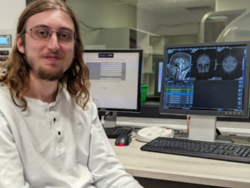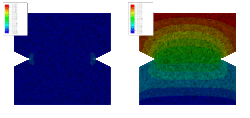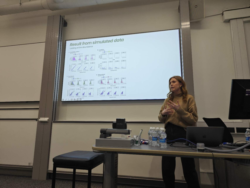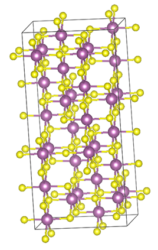In this case study, we hear from Sandeep Das (based at the School of Chemistry), who has been utilising BEAR to design novel Li-ion battery materials. I am a postdoctoral researcher and computational chemist in the Scanlon Materials Theory Group based at the School of Chemistry, University of Birmingham. My research is currently focussed on … Continue reading “Studying battery materials using high performance cluster BlueBEAR”
Category: Case study
A computational fluid dynamic model of an ultra clean air operating theatre
In this case study, we hear from Andrew Thomas (Birmingham Medical School), a Consultant Orthopaedic Surgeon at the Royal Orthopaedic Hospital NHS Foundation Trust, who has been utilising BlueBEAR to produce a new Computational Fluid Dynamics (CFD) model of the type of operating theatre used for joint replacement surgery. The work is part of a … Continue reading “A computational fluid dynamic model of an ultra clean air operating theatre”
Investigating the brain with BEAR
In this case study, we hear from Brandon Ingram (based at the School of Psychology), who has been utilising BEAR to deepen their understanding of the mechanisms our brains employ to interpret visual stimuli. My research focuses on integrating electroencephalography (EEG) and functional magnetic resonance imaging (fMRI) to gain a more comprehensive understanding of how … Continue reading “Investigating the brain with BEAR”
Studying stars across the Milky Way with BEAR
In this case study, we hear from Amalie Stokholm (based at the School of Physics and Astronomy), who has been using stars to gain insights into the history of our Galaxy using the high-performance cluster BlueBEAR and the Research Data Store, both housed at the University of Birmingham. My name is Amalie Stokholm. I am … Continue reading “Studying stars across the Milky Way with BEAR”
Studying phase-field fracture mechanics using the high-performance cluster BlueBEAR
In this case study, we hear from Vincenzo Brachetta (School of Metallurgy and Materials), who has been working on fracture mechanics in materials science using the high-performance cluster BlueBEAR and the Research Data Store, both housed at the University of Birmingham. He is also a member of the Birmingham Environment for Academic Research (BEAR) Champions … Continue reading “Studying phase-field fracture mechanics using the high-performance cluster BlueBEAR”
Predicting residual stresses in additive manufacturing using the high-performance cluster BlueBEAR
In this case study, we hear from Vincenzo Brachetta (School of Metallurgy and Materials), who has been working on prediction of residual stresses in materials science using the high-performance cluster BlueBEAR and the Research Data Storage, both housed at the University of Birmingham. He is also a member of the Birmingham Environment for Academic Research … Continue reading “Predicting residual stresses in additive manufacturing using the high-performance cluster BlueBEAR”
Using BlueBEAR to predict the wind characteristics around high-rise buildings
In this case study we hear from Jose Romero, a PhD student in Civil Engineering, who has been using BlueBEAR to predict wind characteristics around high-rise buildings. You probably don’t realise it, but wind is probably influencing your actions on a daily basis! It may be that you choose to grab a coat before leaving … Continue reading “Using BlueBEAR to predict the wind characteristics around high-rise buildings”
Using computational and laboratory research to unravel genome plasticity in plants
In this case study we hear from Katie Jeynes-Cupper, a PhD student in Biosciences, who has been using BlueBEAR to unravel genome plasticity in plants. She was the winner of the best presentation at our recent BEAR Conference 2024. From food security to biofuel production, the demand for plant-derived products is growing exponentially, in parallel … Continue reading “Using computational and laboratory research to unravel genome plasticity in plants”
Using BEAR to characterise novel materials for renewable energy applications
In this case study we hear from Philippa Cox, a PhD student in Chemistry, who has been using BlueBEAR to characterise novel materials for renewable energy applications. I am a first year PhD student in the Scanlon Materials Theory Group based at the University of Birmingham. My research centres around using computational methods to analyse … Continue reading “Using BEAR to characterise novel materials for renewable energy applications”
Simulating the solution: How BlueBEAR transforms powder dissolution challenges into opportunities
In this case study we hear from Khizra Abdul Wadood, a PhD student in Chemical Engineering, who has been harnessing BlueBEAR to investigate advanced powder dissolution dynamics. From pharmaceuticals and chemical processing to fast moving goods, oral care and personal hygiene, powders are the building blocks of everything from fairly basic suspensions to the more … Continue reading “Simulating the solution: How BlueBEAR transforms powder dissolution challenges into opportunities”










